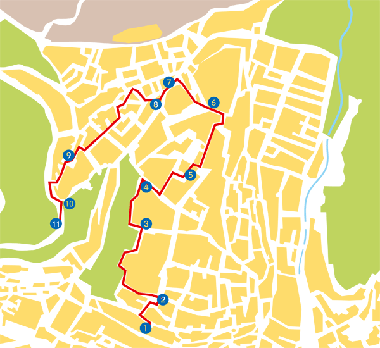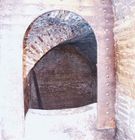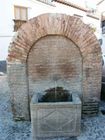
The Muslims left to patent in Granada their great development of the water.
The ingenious exploitation of water devised by the Muslims is an excuse to enjoy this route which traces out a beautiful itinerary through the "aljibes" or water cisterns of Granada: Mirador of San Cristobál; aljibe of San Cristobal; aljibe of San Bartolome; Calle Panaderos(aljibe de Polo); aljibe of the Plaza del Salvador; aljibe of the Tomasas; aljibe of San Nicolas; aljibe of the Gitana; aljibe of El Rey; aljibe of San Miguel Bajo; aljibe of Cenete. As well as centennial stones, a living reflection of the historical periods and artistic styles which they protagonised, the city of Granada awaits the visitor to hand him delicious little moments for the senses. One of them is simply to hear the water in one of her small squares or gardens. The Albaicin is the perfect place to experience this pleasure. In this district the Nazarenes developed sophisticated systems of irrigation and water channelling which, in many cases, are still being used. To maximise its exploitation and multiply its resources, they used the aljibes, or water cisterns, of which the most important are still preserved: that of the Iglesia del Salvador, the old main mosque of the Albaicin or that which is situated in the carril de las Tomasas, with a dome of unusual architecture. Also outstanding is the Aljibe del Rey which is the largest of Granada's Muslim water cisterns. It is made up of four aisles nowadays and its dome is found inside the so called Carmen del Aljibe del Rey which is the headquarters of the Albaicin Foundation of Granada.
| 



 Ayuntamiento de Granada
Ayuntamiento de Granada

